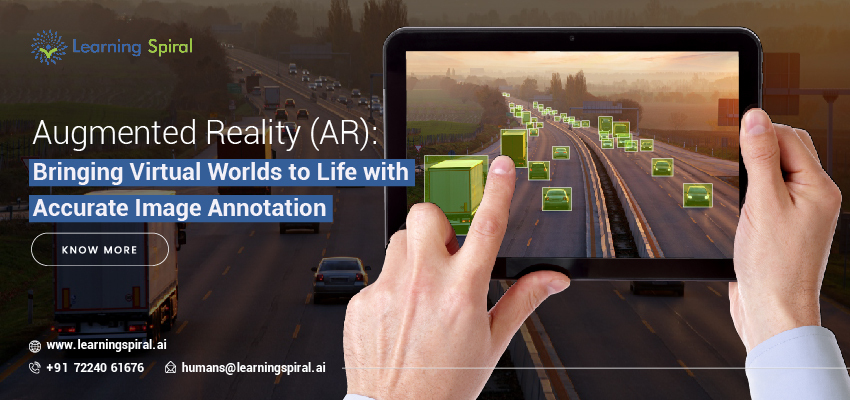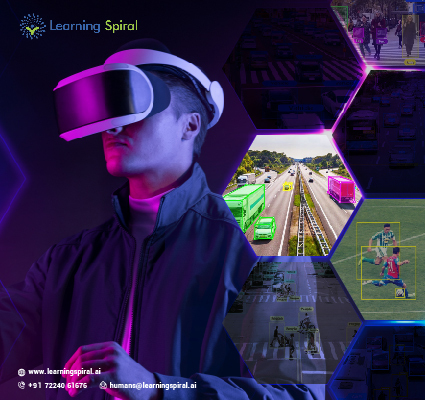
Augmented Reality (AR) has emerged as a revolutionary technology, blurring the lines between the physical and digital worlds. It overlays computer-generated information onto the real world in real-time, creating immersive experiences across various applications.
From enhancing retail experiences to providing step-by-step instructions for complex tasks, AR’s potential is vast. However, the accuracy and effectiveness of AR experiences rely heavily on a seemingly mundane but crucial process – image annotation.
What is AR & How Image Annotation Fuels It?
Imagine the world around you, but with cool digital stuff added on! That’s augmented reality. It uses your phone or tablet camera to show you the real world, but with extra things like pictures, videos, or even 3D models on top.
AR applications function by analyzing the user’s environment through a smartphone camera or headset.
To understand what the user sees and superimpose virtual elements accordingly, AR systems require a deep understanding of the visual world. This is where image annotation steps in.

Image annotation involves meticulously tagging images with specific information. In the context of AR, this translates to:
- Object Recognition: Identifying and labeling objects within an image, allowing the AR system to recognize and interact with them.
- Depth Perception: Annotating images with depth information allows for accurate placement of virtual objects within the real-world environment, creating a realistic sense of scale and perspective.
- Surface Detection: Recognizing flat surfaces allows for the projection of virtual elements onto walls, tables, or other surfaces, creating interactive experiences.
The Importance of High-Quality & Accurate Image Annotation
The quality of image annotation directly impacts the user experience in AR applications. Inaccurate annotations can lead to:
- Misplaced Virtual Objects: Objects appearing to float or hover incorrectly within the environment, breaking immersion.
- Incorrect Interactions: Difficulty in interacting with virtual elements due to inaccurate recognition of real-world objects.
- Glitches and Errors: Poorly annotated images can cause technical issues within the AR application, disrupting the user experience.
The Art and Science of Image Annotation for AR
Creating accurate image annotations for AR applications requires a combination of human expertise and technological advancements:
- Human Labelers: Experienced data annotators meticulously tag images, ensuring precise object recognition, depth information, and surface detection.
- Advanced Tools: Specialized annotation platforms provide tools to streamline the process, manage large datasets, and ensure consistency of labels.
- AI-Assisted Annotation: Artificial intelligence can assist human labelers by automating repetitive tasks, identifying inconsistencies, and improving overall efficiency.
Advanced Image Annotation Techniques for AR
As AR applications evolve, image annotation techniques are becoming increasingly sophisticated. Here are some advanced approaches:
- Semantic Segmentation: This technique involves labeling each pixel in an image according to its category, providing a more detailed understanding of the scene for complex AR interactions.
- Keypoint Annotation: Identifying and labeling specific key points on objects allows for precise manipulation and interaction with virtual elements within the AR experience.
Conclusion
Image annotation plays a critical role in the success of AR. By ensuring accurate and detailed labeling of the visual world, we unlock the true potential of AR, paving the way for a future where virtual and physical realities seamlessly blend to create interactive, informative, and immersive experiences.
As AR continues to evolve, the science and art of image annotation will remain at the forefront, bringing virtual worlds to life with unprecedented accuracy and sophistication.

